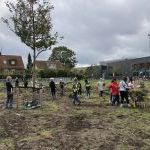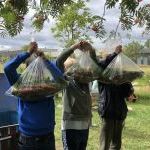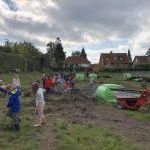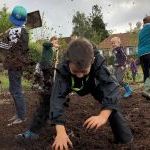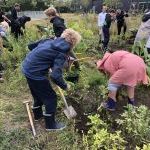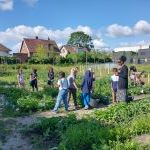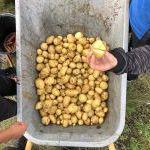Roof Tomatoes
TagTomat is a private company that offers a lot of different growing courses and in this example they provide free teaching materials and support in developing school gardens. The teaching material and courses are customised to different ages and cover many topics such as biodiversity, nature in cities, guerilla gardening, insects, ecosystems, foodchains and pollination. TagTomat work in communties and schools, and this example shows how they helped Lykkebo Skole green up their school grounds.
Website
Useful links
Country
Media
Photo source: TagTomat
Useful UK links
In the UK, Trees for Cities run an 'Edible Playground' project to support schools grow food in their grounds. The project provides durable oak raised beds and vertical growing spaces making growing and harvesting easy; a greenhouse, shed, wormery and composting area; seating, plants, seeds, and one class’ worth of gardening tools. Teachers are trained and supported so they’re ready to use the Edible Playground to bring the curriculum to life!
* TOP TIP *
'Make a seed bomb for your school grounds ensuring that the seeds you include are native to your local area. This will ensure that you support those insects that have become reliant on flowers from the local area'
How is the project linked to climate change and sustainability?
This project has many different links to climate change and sustainability. As described above, the educational subjects span through many topics such as biodiversity, nature in cities, guerilla gardening, co-evelution, insects, ecosystems, foodchains and pollination.
Who is involved?
Schools, teachers, pupils, parents, and many more.
How are the participants involved?
The participants can acces the educational material for free, with video guides also available. The scenario depends on which course and theme that the school chooses and also which frame is chosen - either the do-it-yourself way or TagTomats (Roof Tomatoes) visit to the school, or in a green area nearby. The main activity in all of the courses is the growing-aspect and learning about environmental theory through the practical activity. An example can be that pupils are given 'frø-bomber' (seed-bombs), which they can sow in the school grounds, public spaces or on a windowsill. Another example could be learning about degradation, nutrient cycles and respiration through a fungi-growing-kit.
Key steps:
One of the teaching activities that is developed by TagTomt is making and planting 'seed-bombs':
Step 1: Buy the materials required: 3 litres of clay or claypowder (this is important because the clay; makes it easier for the bombs to dry and keep the shape, protect the seeds, and provide nutrient for the seeds). 2 litres of compost or other gardening soil. 0.5 litres of seeds (of your preference). Approximately litres water. Biodegradable yarn (made from plant fibres)
Step 2: Make your seed-bombs using this procedure:
- Mix all the ingredients (excluding the seeds) to a uniform consistency.
- Roll it into a sausage shape and cut tinto 6 pieces.
- Roll each individual piece into a ball.
- Make a hole in each of the balls and fill with seeds.
- Tie knots on your biodegradable yarn (made from plant-fibres) and put some into the hole.
- Close the hole and let the bombs to dry for a few days.
Step 3: Throw the seed-bombs in the outside area on the school, around the community or in pots on a windowsill.

